Micki Pistorius - Profiling Serial Killers: and Other Crimes in South Africa
Here you can read online Micki Pistorius - Profiling Serial Killers: and Other Crimes in South Africa full text of the book (entire story) in english for free. Download pdf and epub, get meaning, cover and reviews about this ebook. year: 2005, genre: Detective and thriller. Description of the work, (preface) as well as reviews are available. Best literature library LitArk.com created for fans of good reading and offers a wide selection of genres:
Romance novel
Science fiction
Adventure
Detective
Science
History
Home and family
Prose
Art
Politics
Computer
Non-fiction
Religion
Business
Children
Humor
Choose a favorite category and find really read worthwhile books. Enjoy immersion in the world of imagination, feel the emotions of the characters or learn something new for yourself, make an fascinating discovery.
- Book:Profiling Serial Killers: and Other Crimes in South Africa
- Author:
- Genre:
- Year:2005
- Rating:4 / 5
- Favourites:Add to favourites
- Your mark:
- 80
- 1
- 2
- 3
- 4
- 5
Profiling Serial Killers: and Other Crimes in South Africa: summary, description and annotation
We offer to read an annotation, description, summary or preface (depends on what the author of the book "Profiling Serial Killers: and Other Crimes in South Africa" wrote himself). If you haven't found the necessary information about the book — write in the comments, we will try to find it.
Profiling Serial Killers: and Other Crimes in South Africa — read online for free the complete book (whole text) full work
Below is the text of the book, divided by pages. System saving the place of the last page read, allows you to conveniently read the book "Profiling Serial Killers: and Other Crimes in South Africa" online for free, without having to search again every time where you left off. Put a bookmark, and you can go to the page where you finished reading at any time.
Font size:
Interval:
Bookmark:
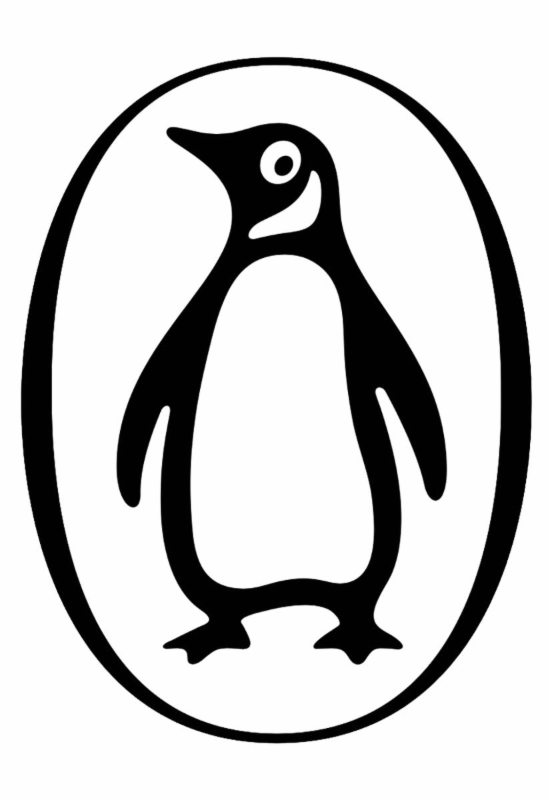
and other crimes in South Africa

PENGUIN BOOKS
PENGUIN BOOKS
Published by the Penguin Group
Penguin Books (South Africa) (Pty) Ltd, 24 Sturdee Avenue, Rosebank, Johannesburg 2196, South Africa
Penguin Books Ltd, 80 Strand, London WC2R 0RL, England
Penguin Group (USA) Inc, 375 Hudson Street, New York, New York 10014, USA
Penguin Group (Canada), 90 Eglinton Avenue East, Suite 700, Toronto, Ontario, M4P 2Y3, Canada (a division of Pearson Penguin Canada Inc.)
Penguin Ireland, 25 St Stephens Green, Dublin 2, Ireland (a division of Penguin Books Ltd)
Penguin Group (Australia), 250 Camberwell Road, Camberwell, Victoria 3124, Australia (a division of Pearson Australia Group Pty Ltd)
Penguin Books India Pvt Ltd, 11 Community Centre, Panchsheel Park, New Delhi 110 017, India
Penguin Group (NZ), 67 Apollo Drive, Mairangi Bay, Auckland 1310, New Zealand (a division of Pearson New Zealand Ltd)
Penguin Books (South Africa) (Pty) Ltd, Registered Offices:
24 Sturdee Avenue, Rosebank, Johannesburg 2196, South Africa
www.penguinbooks.co.za
First published by Penguin Books (South Africa) (Pty) Ltd 2005
Reprinted 2006
Copyright Micki Pistorius 2005
All rights reserved
The moral right of the author has been asserted
Except in the United States of America, this book is sold subject to the condition that it shall not, by way of trade or otherwise, be lent, resold, hired out or otherwise circulated without the publishers prior consent in any form of binding or cover other than that in which it is published and without a similar condition including this condition being imposed on the subsequent purchaser.
ISBN: 978-0-14-302710-2
This book is dedicated to the memory of my father
Calie Pistorius
Acknowledgements
Introduction to Profiling
Serial killers
Pyromaniacs
Rapists
Child Molesters
Stalkers
White-collar Crime
Intelligence Profiling
References
My thanks to the following for their input and assistance:
Associated Intelligence Network, Anne Davies (Metropolitan Police, London), Gavin de Becker (Gavin de Becker Inc, Los Angeles), Advocate Beverly Edwards (State Prosecutor, Johannesburg), Dr Charmaine Elliot (Graphologist), Nate Gordon (Academy for Investigative Training, USA), Roy Hazelwood (ex-FBI profiler), Dr Eric Hickey (California State University), Dr Gerard Labuschagne (Investigative Psychology Unit, South African Police Service), Robert Ressler (ex-FBI profiler), Avinoam Sapir (Laboratory for Scientific Interrogation, USA), and the following South African Police Service detectives: A J Oliver, Philip Veldhuizen, Allan Alford, Bushie Rambardhursing, Vivian Bieldt, Mike van Aardt and Frans Visagie.
The author and publisher gratefully acknowledge the following persons and instances for permission to quote copyright material:
Nathan J Gordon for permission to quote from Effective Interviewing and Interrogation Techniques (N J Gordon & W L Fleisher, Academic Press, 2002).
Material in the chapter Stalkers (pp325-386) was extracted with permission from the Journal of Forensic Sciences, No 1 (1981) and March 1991, copyright ASTM International, 100 Bar Harbor Drive, West Conshohocken, PA 19428. (Dietz et al: Threatening and otherwise inappropriate letters to Hollywood celebrities; Dietz et al: Threatening and otherwise inappropriate letters to members of the US Congress)
Gavin de Becker for permission to quote material from The Gift of Fear, Little Brown & Company, 1997
D L McIvor & B Duthie, Criminal Justice & Behavior, December 1986; R Knight & R Prentky, Criminal Justice & Behavior, 14: 403-426, 1987; R M Holmes & J de Burger, Serial Murder (1988) all reprinted by permission of Sage Publications
Every effort has been made to trace copyright holders or their assigns. The author and publisher apologise for any inadvertent infringement of copyright and, if this is drawn to their attention, will be pleased to make the necessary correction to any subsequent edition.
Imagine a crime scene in a patch of veld the size of two rugby fields. It is strewn with twelve female corpses in different stages of decomposition, all virtually naked, all strangled with underwear. The identities of the victims are unknown and some of them have been reduced to skeletal remains. Physical evidence has been destroyed by the weather. No fingerprints, no footprints, since the rain has washed these away; no hair or fibres, since the wind has blown them away. No semen, since the perpetrator used condoms. The murder weapons were the womens own clothing and could thus not be traced to a suspect. The womens handbags and any other form of identification has been removed. No witnesses, since the area is remote. The bodies were found by a man walking his dog in the veld; the dog picked up the scent of the decomposing bodies.
If you were the investigating officer in charge of this crime scene, what would you do? How would you go about catching the killer?
Most people would answer that they would begin by trying to identify the victims in order to ascertain whether they had all had contact with the same man. Examining missing persons reports (provided the victims had officially been reported missing), reconstructing skulls, drawing up identikits of the womens faces, publishing photographs of their clothing in the press and on television, etc all these are processes that could take weeks or even months.
It would not help much even if all the victims were identified, since the killer did not necessarily know who they were when he selected them. Their names and identities meant nothing to him. The only thing the victims had in common was that they had been randomly picked by the same man. During the weeks and months it will take to identify the victims it is more than likely that the killer will strike several more times.
The pressure to solve the case to find the killer will mount. The press will have a field day and the public will be hyped up into hysteria. The killer will realise that the hunt for him is intensifying and may move his graveyard somewhere else. A major investigation costing millions of rands and requiring the time and work of hundreds of policemen and specialists could last a year or more.
If, however, the investigating officer immediately called in the help of an experienced profiler, the profiler will be able to start describing the type of man responsible for the carnage right then and there at the crime scene. Enlisting the help of a profiler will put the investigating officer in touch with the elusive killer, almost from the start.
If I had been the profiler called to this crime scene I would have advised the investigating officer to keep the discovery of the crime scene confidential, to postpone any crime scene processing, to post detectives at the crime scene round the clock, and to wait. The killer would almost certainly return to the scene in less than a week and be caught red-handed, so to speak. A detective once followed my advice in similar circumstances, and the killer was arrested the same night.
The science of modern criminal profiling can be attributed to a psychiatrist named James A Brussel.
Next pageFont size:
Interval:
Bookmark:
Similar books «Profiling Serial Killers: and Other Crimes in South Africa»
Look at similar books to Profiling Serial Killers: and Other Crimes in South Africa. We have selected literature similar in name and meaning in the hope of providing readers with more options to find new, interesting, not yet read works.
Discussion, reviews of the book Profiling Serial Killers: and Other Crimes in South Africa and just readers' own opinions. Leave your comments, write what you think about the work, its meaning or the main characters. Specify what exactly you liked and what you didn't like, and why you think so.

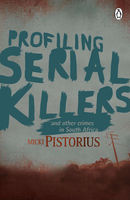


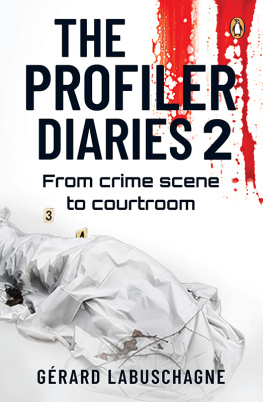

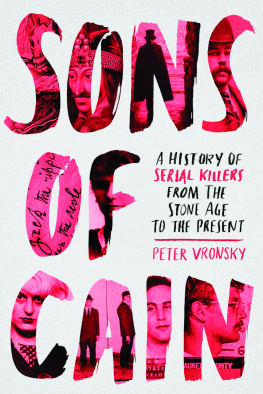
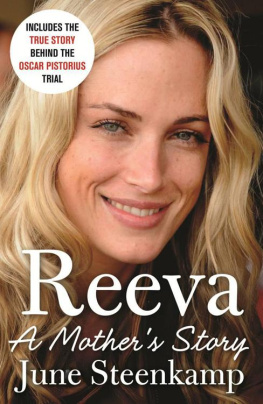
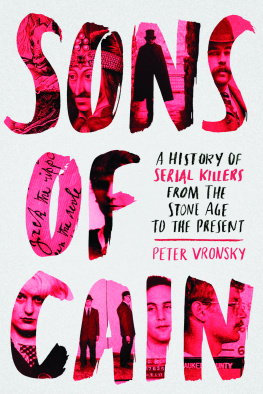

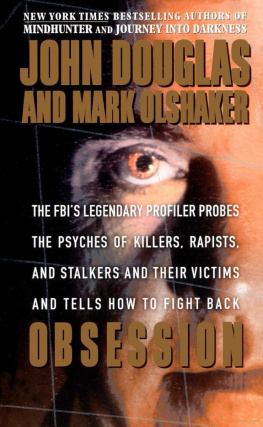
![Charlotte Greig - Evil Serial Killers. In the Minds of Monsters [Fully Illustrated]](/uploads/posts/book/70143/thumbs/charlotte-greig-evil-serial-killers-in-the-minds.jpg)
